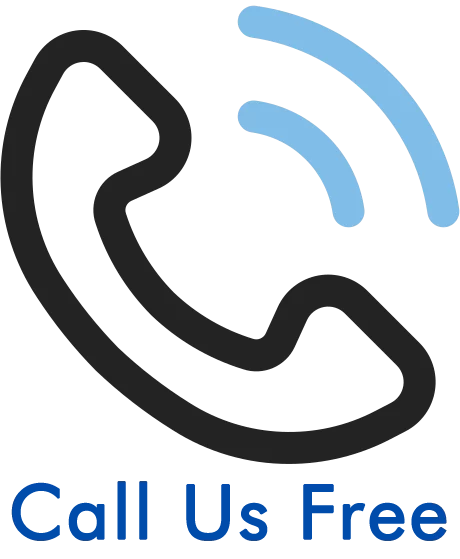Updates To The Highway Code For Drivers – Road Accident Claims Resources
Welcome to our guide on the changes to the Highway Code for drivers, which the government introduced in January 2022. Under the Road Traffic Act 1988, drivers have a duty of care to other road users. Furthermore, the Highway Code provides additional guidance and rules for drivers to follow when navigating the roads. Part of their duty of care means taking reasonable steps to prevent other road users from experiencing harm in road traffic accidents. This duty of care applies to all road users.

A guide on the changes to the highway code for drivers
However, as part of the changes to the Highway Code, a greater responsibility has been placed on those operating vehicles that have the potential to cause the most harm. We will explore these changes in more detail throughout our guide and how they might affect drivers as well as other road users.
We will also look at the compensation you may be owed following an accident on the road that was caused by someone else’s negligence.
If another road user has breached the duty of care they owed you, causing you to sustain harm in an accident, you may be eligible to claim compensation. For more information, you can get in touch with our team on the details below:
- Telephone: 020 3870 4868
- Contact form: Fill out our online claims form via our website.
- Live chat: Speak with an advisor for instant advice using the live chat function below.
Select A Section
- What Are The Changes To The Highway Code For Drivers?
- New Priorities For Pedestrians And Cyclists
- Using The Dutch Reach Technique
- Cyclists Can Pass You On The Left And Right
- Calculating Payouts For Accidents On The Road
- Learn More About The Highway Code For Drivers And Accident Claims
What Are The Changes To The Highway Code For Drivers?
There are various changes that have been made to the Highway Code, such as the introduction of the hierarchy of road users.
Rule H1 of the Highway Code states that all road users should be considerate to each other and understand their responsibilities with regard to one another’s safety. However, those road users that are operating vehicles that pose the greatest threat to others now have a greater responsibility to reduce the danger they pose.
For instance, the driver of a car has a greater responsibility to reduce the danger they pose to more vulnerable road users, such as cyclists and pedestrians.
It’s important to note that the hierarchy of road users does not negate everyone’s need to act responsibly on the roads. So, if you have experienced harm as a result of any other road user breaching the duty of care they owe you, you could seek compensation.
Please call our team on the number above.
New Priorities For Pedestrians And Cyclists
As well as changes to the Highway Code for drivers, there are certain changes that apply to pedestrians and cyclists. We have explored some of these in the sections below.
Highway Code For Drivers – Road Position For Cyclists
There has been further guidance for cyclists and their positioning in the road published in the changes to the Highway Code. For instance:
- A cyclist can travel in the middle of their lane in certain circumstances, such as when roads are quiet or in slower-moving traffic.
- Cyclists should keep around 0.5 metres away from the kerb on a busy road.
- They should show consideration to other road users when riding in groups. However, they are allowed to ride two abreast if necessary and safer to do so.
Pedestrians Crossing At A Junction
As pedestrians are vulnerable road users, others navigating the roads have a responsibility to prevent them from sustaining harm. The changes to the Highway Code for drivers and pedestrians state that:
- Traffic should give way to pedestrians when they are waiting to cross the road or crossing it.
- If a pedestrian has already begun crossing or waiting to cross the road, they have the right of way over drivers.
If you were a pedestrian hit by a car and were caused harm as a result of the driver’s negligence, call our team to find out whether you’re eligible to claim.
Using The Dutch Reach Technique
The updates in the Highway Code for drivers include the recommendation of using the ‘Dutch Reach’ technique. This technique involves drivers and passengers using the hand on the opposite side to the door they’re opening when leaving a vehicle.
The benefits of using the Dutch Reach method will force the driver or passenger to look over their shoulder.
As a result, they are more likely to see any oncoming pedestrians, cyclists or vehicles and less likely to cause them injury. For instance, using the Dutch technique can avoid a cycling accident where road users are hit by a car door.
If you have experienced an injury in a similar type of accident, please get in touch with our team on the number above. An advisor could assess whether you’re eligible to claim.
Can Cyclists Pass On The Left And Right?
In certain situations, such as when a cyclist is riding straight ahead at a junction, a cyclist has priority over traffic that’s waiting to turn in or out of a side road unless there are signs or markings that suggest otherwise.
However, cyclists should show caution when doing so because a driver may not see them.
It’s important to note though that the driver should check their mirrors regularly when driving to be aware of any cyclists around them. This is as per rules and guidance set out in the Highway Code for drivers.
Calculating Payouts For Accidents On The Road
If you were involved in a road accident that was caused by another road user acting negligently, it may be possible for you to put forward a claim and seek compensation.
The table below provides bracket compensation amounts from the Judicial College Guidelines. This is a publication often used to help value your injuries. Alongside this, medical evidence may be consulted to assess the severity of your injuries and how badly they affected your quality of life.
The figures in the table only relate to general damages which cover the compensation awarded for your injuries and loss of amenity. However, you should only use them as a guide because your actual settlement will vary depending on several factors unique to your case.
| Body Part Injured | Category | Payout | About This Injury |
|---|---|---|---|
| Brain Damage | Moderate (c) (ii) | £85,150 to £140,870 | There could be effects on the persons intellectual capacity as well as senses such as sight and their ability to speak. |
| Brain Damage | Moderate (c) (iii) | £40,410 to £85,150 | There is a reduced ability to work as well as an impact on memory and concentration. |
| Head Injury | Minor | £2,070 to £11,980 | If there is any brain damage it will be minimal. |
| Back Injury | Moderate (b) (i) | £26,050 to £36,390 | Examples of injuries in this bracket include a prolapse of an intervertebral disc which requires surgical treatment or a damaged disc where there is also irritation to the nerve root and mobility is reduced. |
| Back Injury | Minor (c) (iii) | Up to £2,300 | The injury should be fully recovered from in three months or less. |
| Elbow Injury | Less severe (b) | £14,690 to £30,050 | Whilst function of the elbow joint has been impaired, there is not any significant form of disability and it does not require a major operation. |
| Hand Injury | (e) Serious | £27,220 to £58,100 | Examples might include an injury to the hand which has reduced its usefulness by 50%. May include some amputations of several fingers that have been rejoined and left the hand deformed. |
| Wrist Injury | (d) | Rarely exceed £9,620 | This bracket might include soft tissue injuries and bone fractures. Whilst recovery takes longer a full recovery is made. |
| Leg Injuries | Severe (b) (ii) | £51,460 to £85,600 | The injury caused will lead to permanent mobility problems. Mobility aids such as crutches will be needed permanently. |
| Ankle Injury | Moderate (c) | £12,900 to £24,950 | Ligament injuries or bone fractures which result in disabilities that are less serious. There may be problems with walking over uneven surfaces or when walking/ standing for longer periods of time. |
Your compensation payout may also comprise special damages. These reimburse you for the financial losses caused by your injuries. For instance, if you were unable to work while recovering you could claim back any loss of earnings you experienced.
Please note, you will need to provide evidence to prove any losses, such as receipts, payslips or invoices.
Will The Whiplash Reforms Programme Affect Me?
In May 2021, the government introduced the Whiplash Reform Programme. The programme issued changes to the way low-value road traffic accident claims were made.
The changes affect drivers and passengers of vehicles over the age of 18 who sustain injuries that are valued at less than £5,000. If injuries are valued at less than £5,000, claims must be made through the government portal.
However, there are certain road users who are exempt such as:
- Those under the age of 18
- Cyclists
- Pedestrians
- Motorcyclists
- Those involved in car accidents with foreign vehicles
If you are unsure of the value of your injuries, please get in touch with us today. An advisor can offer a free valuation of your claim and advise on the avenue you may need to use to claim compensation.
Learn More About The Highway Code For Drivers And Accident Claims
We hope that this guide to the Highway Code for drivers has been helpful. Although we have aimed to cover the information you need, we understand you may still have questions regarding road traffic accident claims.
If so, you can get in touch with our team of advisors. They can assess your claim to see whether you’re eligible to seek compensation. If you are, they could assign a personal injury solicitor from our panel to represent your case on a No Win No Fee basis.
There are several benefits to claiming on this basis such as:
- There are no upfront costs to pay your solicitor for their services
- You won’t need to pay any ongoing costs during the process of your claim
- For claims that are unsuccessful, there will be no success fee to pay your solicitor.
In cases where your case succeeds, you will need to pay a success fee from your compensation. The fee is deducted as a percentage which is subject to a legal cap. You will be made aware of the fee before your solicitor starts working on your case.
To begin your claim for a road traffic accident with a No Win No Fee solicitor from our panel, please get in touch with us using the details below:
- Telephone: 020 3870 4868
- Contact form: Fill out our online claims form via our website.
- Live chat: Speak with an advisor for instant advice using the live chat function below.
The Highway Code For Drivers And Claims Guides
The following resources may be helpful if you wish to make an accident or injury claim following a road traffic accident that caused you harm.
- A Guide On Making A Claim After A Road Traffic Accident
- Who Gets Priority Under The Highway Code Changes?
- Time Limits to Claim After An Accident
- What Do You Need To Prove Cycling Injury Claims?
- Reported Road Casualties in Great Britain, Annual Report 2020
- New changes to the Highway Code for 2022.
- Legal obligations for drivers and riders.
We hope our guide exploring the changes to the Highway Code for drivers has helped. However, we understand if you have any additional questions. If so, please get in touch on the details above.





